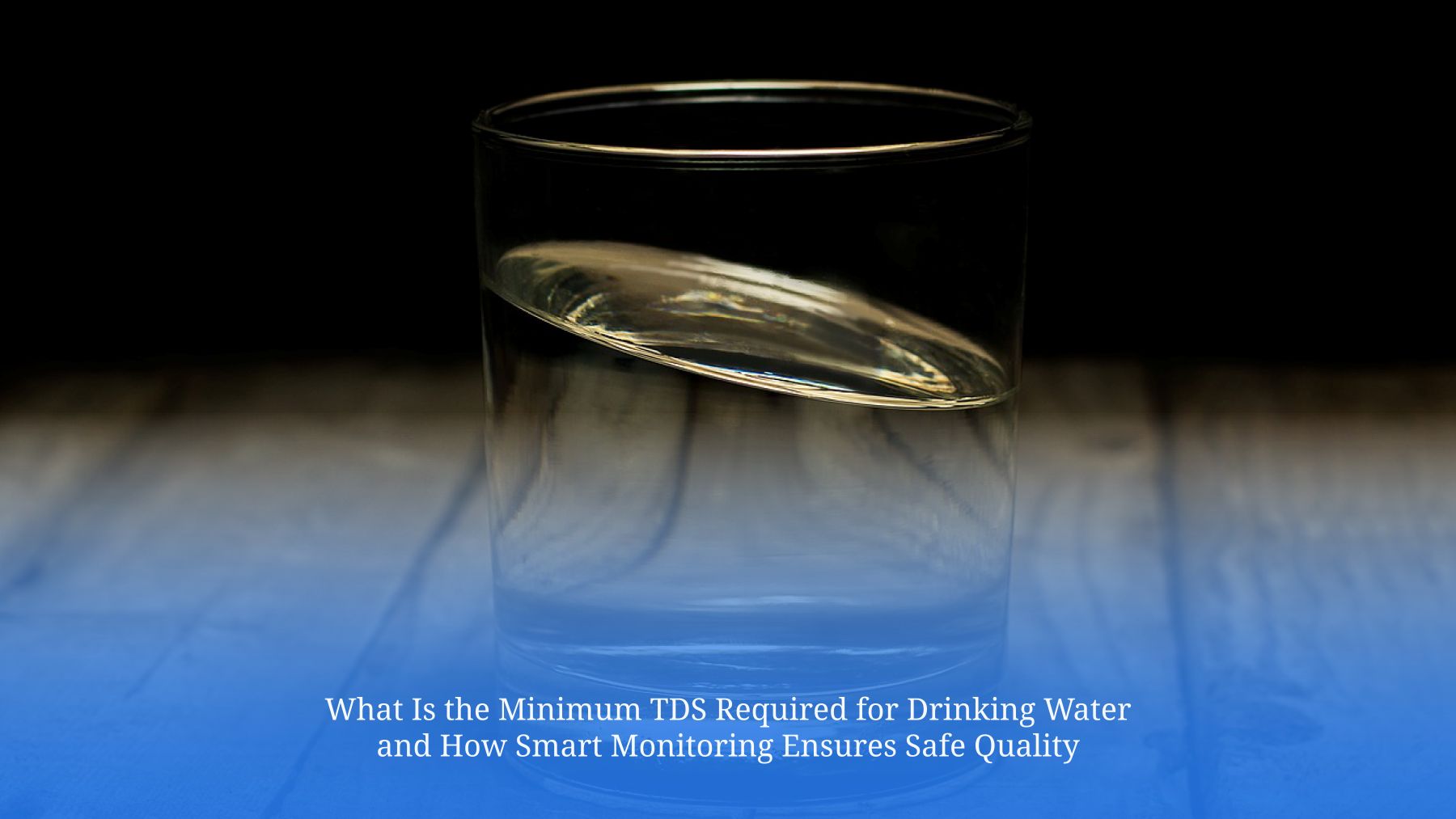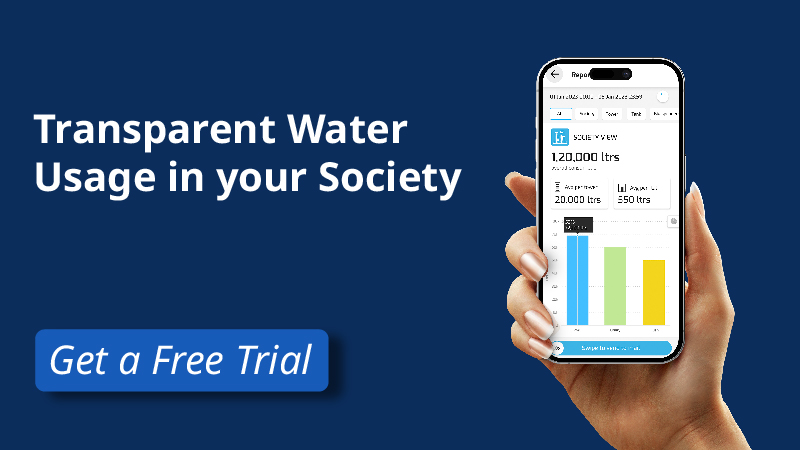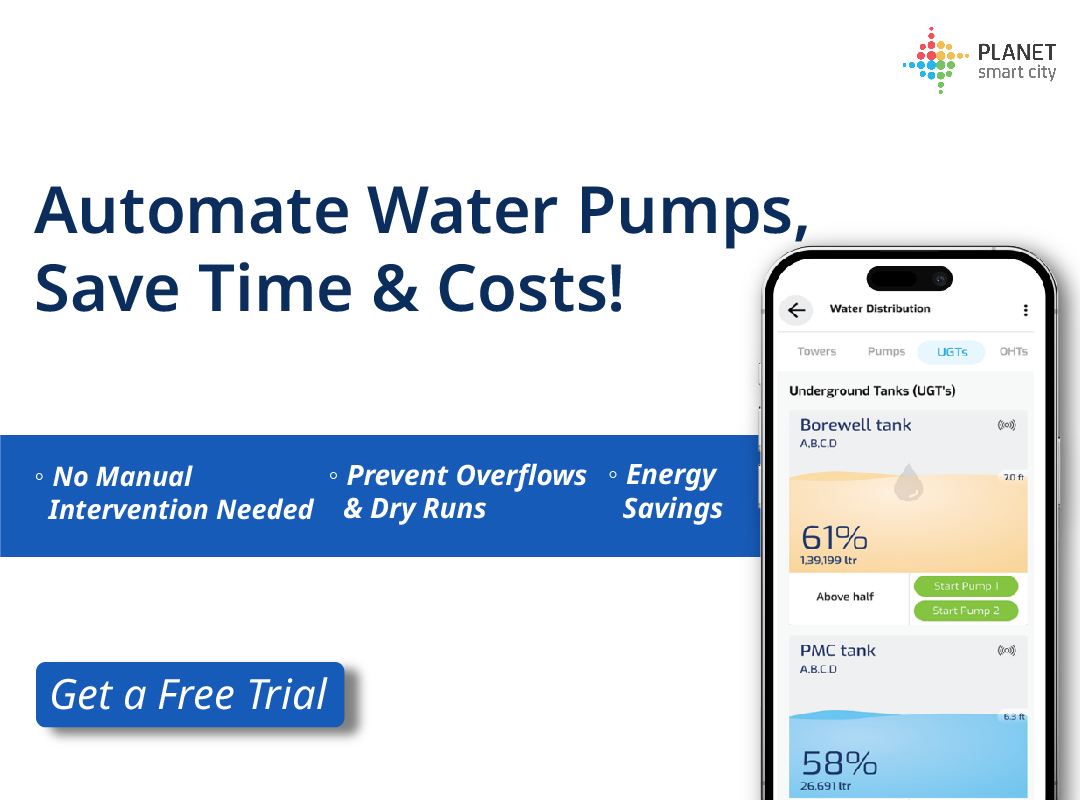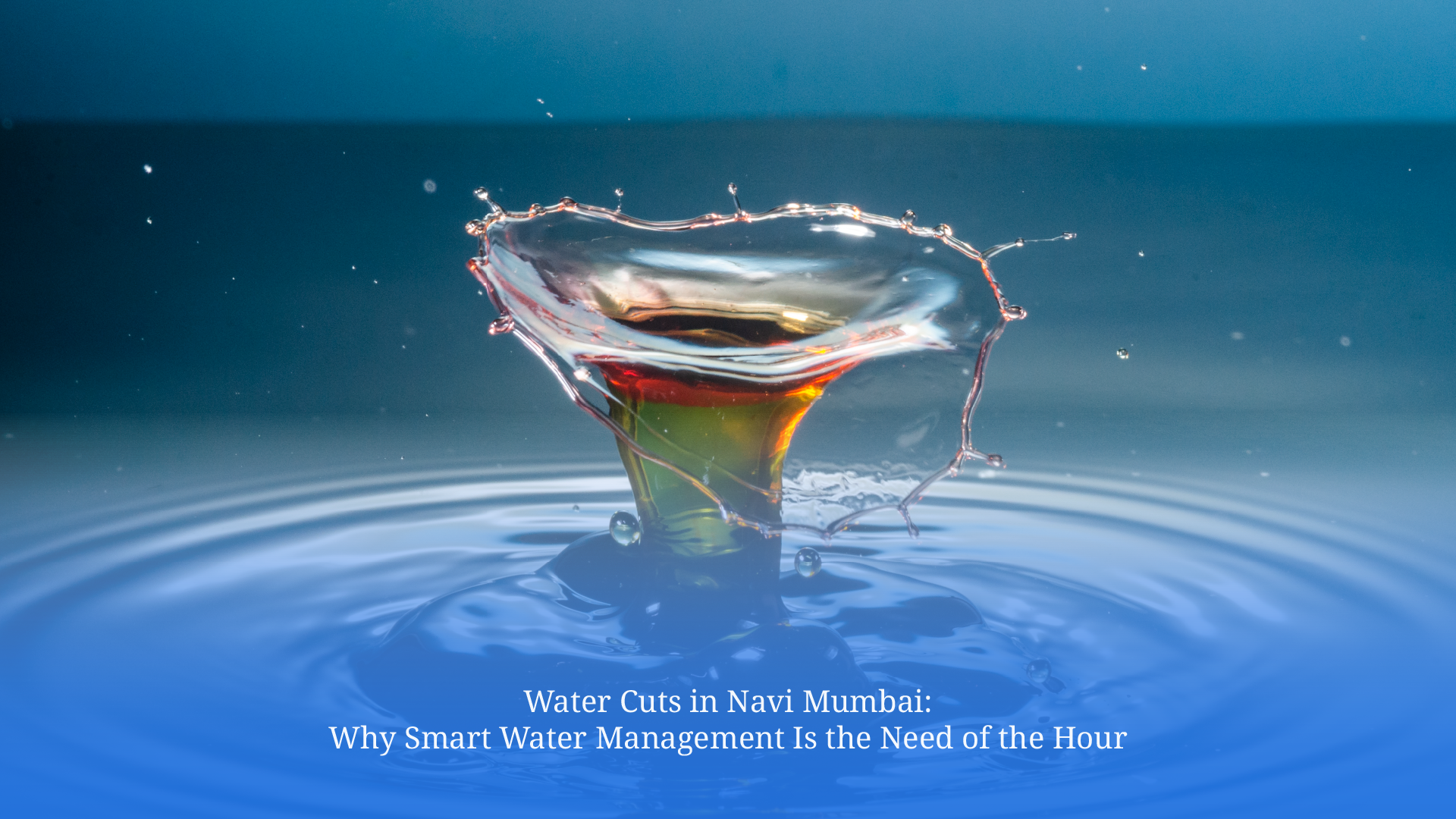What Is the Minimum TDS Required for Drinking Water, and How Smart Monitoring Ensures Safe Quality?

Total Dissolved Solids (TDS) is a critical parameter in assessing drinking water quality. Whether it’s sourced from the tap, a purifier, or a borewell, water’s taste, nutritional value, and safety are significantly influenced by its TDS level. Understanding the minimum TDS required for drinking water is vital for maintaining both health and taste standards, and with smart monitoring systems now available, maintaining this delicate balance is more seamless than ever.
What Is TDS in Drinking Water? A Closer Look at Its Composition
TDS, or Total Dissolved Solids, refers to the concentration of dissolved substances in water, both organic and inorganic. These include a variety of minerals, salts, metals, and trace organic compounds. Common constituents of TDS in drinking water include calcium, magnesium, sodium, potassium, chlorides, sulphates, bicarbonates, and nitrates, among others.
These substances originate from natural sources, such as mineral springs and groundwater aquifers, as well as anthropogenic influences like industrial runoff, plumbing systems, and water treatment processes. While certain minerals in drinking water contribute to human health and enhance palatability, excessive or deficient TDS can negatively affect water quality.


How Much Is Just Right? The Ideal TDS Range for Potable Water
The optimum TDS range for drinking water is one that ensures safety, palatability, and health benefits. Here’s a breakdown of global and regional standards:
-
Recommended TDS by WHO
The World Health Organisation (WHO) Drinking Water Guidelines specify a maximum TDS limit of 300 to 600 mg/L (ppm), primarily based on taste and palatability considerations. WHO does not specify any explicit minimum TDS level for health reasons. The often mentioned figure of 50 ppm as a minimum relates more to taste and mineral content preferences rather than a health standard from the WHO.
-
Ideal TDS Range for Drinking Water
The ideal TDS range is generally 50–150 ppm, which provides a balance between mineral presence and clean water characteristics, supporting agreeable taste and trace mineral intake beneficial for health.
-
Indian Drinking Water Standards
The Bureau of Indian Standards (BIS) recommends a TDS ceiling of 500 ppm for potable water. This permissible limit of TDS in drinking water ensures safety from excessive dissolved solids. The recommended or preferred TDS range in the Indian context is approximately 150–250 ppm, considering local climate, diet, and typical water sources, to balance safety, taste, and mineral content.
Flat, Tasteless, and Deficient? The Case Against Very Low TDS
Here are a few reasons why ultra-low TDS water might not be optimal:
- Lacks Essential Minerals: Water with less than 50 ppm often lacks key electrolytes like calcium, magnesium, and potassium, essential for cellular functions.
- Flat or Metallic Taste: Absence of minerals results in bland-tasting water. This can discourage adequate hydration.
- Aggressive Solvent: Ultra-purified water can be more aggressive in leaching metals from pipes and plumbing, though this effect depends on multiple factors, including pH and water chemistry.
- Reduced pH Stability: Low mineral content leads to poor buffering capacity, which can result in wide pH fluctuations.
- Nutritional Deficiency Risk: Long-term consumption of demineralised water may contribute to micronutrient imbalances.
The Other Side of the Scale: Understanding the Risks of Elevated TDS
High TDS water, usually over 500 ppm, can cause the following issues:
- Unpleasant Taste: High levels of sodium, chlorides, or sulphates can make water taste salty, bitter, or metallic.
- Health Risks: Excessive fluoride or nitrate levels are linked to dental/skeletal fluorosis and infant methemoglobinemia (“blue baby syndrome”), respectively.
- Scaling in Appliances: Elevated calcium and magnesium contribute to limescale build-up in kettles, pipes, and water heaters.
- Gastrointestinal Discomfort: High sulphate content may cause diarrhoea or digestive distress.
- Environmental Contamination: Persistently high TDS may indicate industrial or agricultural contamination, warranting further chemical analysis.
How to Measure and Adjust TDS in Water?
Monitoring and managing TDS levels ensure that drinking water remains within the optimal range. Here’s how to do it effectively:
- Use a Digital TDS Meter: These portable devices measure water’s conductivity, which correlates directly with its TDS level. A reading in ppm (parts per million) indicates the concentration of dissolved solids.
- Reverse Osmosis (RO) Systems: RO purifiers effectively reduce high TDS levels. However, if levels drop below 50 ppm after RO, a remineralisation cartridge should be used to reintroduce essential minerals for taste and health benefits.
- UV + UF Filtration: In areas with low TDS but potential microbiological contamination, UV (ultraviolet) and UF (ultrafiltration) methods are preferred for disinfection without altering TDS.
- Blending Technique: This method combines high and low TDS water sources to achieve a balanced composition, often used in industrial and community settings.
- Smart Water Monitoring: IoT-enabled smart water systems allow real-time tracking of TDS, pH, temperature, and contamination levels, ensuring proactive maintenance and regulatory compliance.
Minimum TDS for Drinking Water: Key Takeaways for Safe Hydration
The minimum TDS value for drinking water signifies the balance between purity, essential minerals, and a consistently satisfying drinking experience. As urban lifestyles become more mindful and sustainability-focused, regular water quality monitoring plays a key role in ensuring everyday well-being.
At Planet Smart City, we are committed to creating healthier, more connected communities through practical, people-focused solutions. Encouraging residents to actively monitor and manage TDS levels supports our vision of sustainable living that values both quality and health. Don’t wait. Take control of your hydration by choosing trusted purification systems and keeping an eye on your TDS levels!




